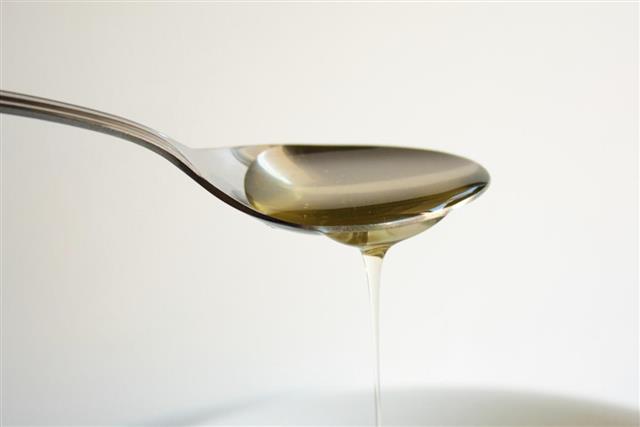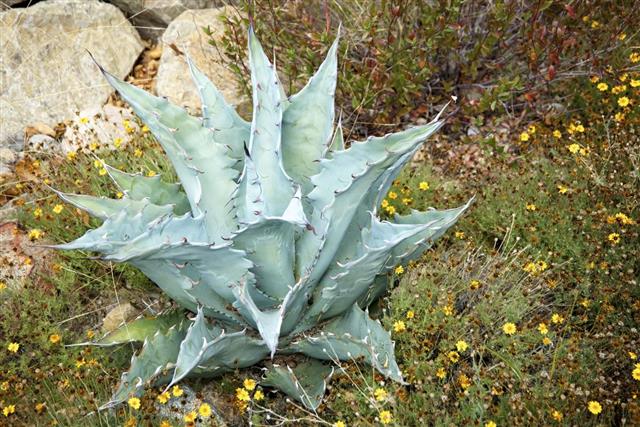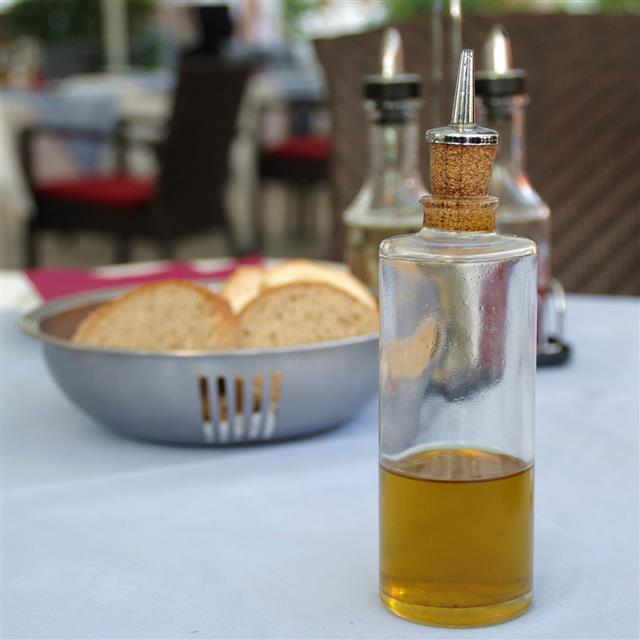
Agave nectar is hardly the safest sweetener it is often quoted to be. It is not even a natural sweetener to begin with. You really should give it a miss when you can. Find out from the following article what you can use instead of agave nectar and also how you can use it to substitute for sugar, honey, brown rice syrup, and corn syrup.
Did You Know?
According to The Weston Price Foundations, “Saponins found in many varieties of agave plants are toxic steroid derivatives, capable of disrupting red blood cells and producing diarrhea and vomiting, to be avoided during pregnancy or breastfeeding, because they might cause or contribute to miscarriage by stimulating blood flow to the uterus. At the very least, agave products should carry a warning label indicating that the product may cause a miscarriage.”
Agave nectar is NOT derived from the core juice or piña of the blue agave, green agave, gray agave, rainbow agave, salmiana agave, or the thorny agave! Rather, it is made from the starch – a complex carbohydrate known as inulin, that is made up of fructose molecules strings – obtained from the huge, bulbous roots (resemblant of pineapples) of these plants.
This starch and the fiber present in the sap is subjected to enzymatic digestion – a very complicated refining process – that primarily manages to convert the two components into chemical fructose – unbound and manmade. Agave nectar basically comes in variant shades of brown, and this concentrated nectar is composed of mainly fructose and glucose. Of course the ratio of fructose and glucose composition in agave nectar keeps varying according to the type of agave nectar in question, While one variety shows a fructose content of 56% and a glucose content of 20%, another might just indicate a glucose content of just 8% and a very high fructose content of 92%. Even though the body processes fructose slowly, which infuses the body with a slow but continual supply of energy, ideally one must keep away from very high concentrations of fructose, as it may set off other derogatory conditions in the body like fructose malabsorption, reduced glucose tolerance, mineral depletion, metabolic syndrome, hypertriglyceridemia, hyperinsulinemia, cardiovascular disease, hardening of the arteries, formation of excess uric acid, liver inflammation, high blood pressure, and obesity. So, besides these reasons, which should amplify you reasons to opt out of agave nectar, when you run out of it and running to the grocer’s seem too tedious, you can opt for the following substitutes to fill in for this neutrally-flavoured sweetener.
Agave Nectar Alternatives
Brown Rice Syrup
~ Quantity of Agave Nectar Required: ½ a cup
~ To be Replaced with: 1 cup of natural gluten-free brown rice syrup (reduce some other liquid by ½ a cup)
~ Nature of the Substitute: It is loaded with vitamin B varieties of thiamine, niacin, and vitamin B6 as well as vitamin K. It tastes somewhat like raw sugar.
~ Best Used for: It is a good replacement of agave nectar while making muffins and salad dressings.
Honey
~ Quantity of Agave Nectar Required: 1 cup
~ To be Replaced with: 1 cup of honey
~ Nature of the Substitute: Remember that honey isn’t neutral to taste at all, so the substitution may alter the taste of the dish in the end. Besides, vegans cannot use this substitute.
Maple Syrup
~ Quantity of Agave Nectar Required: 1 cup
~ To be Replaced with: 1 cup of maple syrup
~ Nature of the Substitute: Know that maple syrup has a distinct taste of its own, which will tamper with the expected taste of the dish.
Sugar Syrup
~ Quantity of Agave Nectar Required: 1 cup
~ To be Replaced with: 1 cup of simple sugar syrup
Sorghum Syrup
~ Quantity of Agave Nectar Required: 1 cup
~ To be Replaced with: 1 cup of sorghum syrup
~ Nature of the Substitute: It is a natural sweetener enriched with calcium, iron, and potassium.
Substituting Other Sweeteners with Agave Syrup
The above-mentioned were some of the substitutes that you can opt for whenever you have run out of agave syrup. On the flip side, agave nectar doesn’t trigger off a sharp rise or fall in the blood glucose levels and has a relatively lower glycemic index (GI) of 28 to 32. Also, it can be totally used by vegans! So, you can opt for it to fill-in for other sweeteners. Now, let us see how exactly we can employ agave syrup to lessen the use of other sweeteners in our life.
For Regular Sugar
~ Ingredient Asked for: White sugar OR demerara sugar OR turbinado sugar OR pure dried sugar cane juice called sucanat
~ Quantity Required: 1 cup
~ To be Replaced with: Two-thirds of a cup of agave nectar (reduce some other liquid by one-fourth to one-third cup)
~ Use a lesser quantity of agave, because it is approximately 40% more sweet than white sugar and it has a denser calorie content.
~ It is one of those natural sugar substitutes that render items brown faster than sugars while baking.
~ Using it to replace sugar helps retain moisture in the dish, makes it fluffier, softer, and increases the shelf life. Now, these are functions which are never performed by artificial sweeteners, when employed to fill in for sugar.
~ If you do not wish to reduce the amount of any other liquid in the recipe (for instance, when concocting a batter) as it would tamper with the preparation as a whole, simply employ thickening agents such as cornstarch or all-purpose flour.
~ Also, mix the nectar with fat or some other liquid in the recipe and not with the dry ingredients called for in the recipe.
~ You will just need to lubricate your pans better as agave sticks to the container more than sugar does.
~ Always opt for a temperature that is 25° F lower than the recommended oven temperature and increase the baking time by 6%. So, anything that must be baked at 350° F for 60 minutes with sugars must be baked at 325° F for 64 minutes with agave nectar.
~ This replacement does wonders when baking cakes, cookies, muffins, pies, and sweet bread varieties.
~ Agave nectar goes superbly well in tequila cocktails and is compatible with most other spirits. So, use it to fill-in for sugar when concocting your cocktail poison.
For Other Sugars
~ Ingredient Asked for: Brown sugar
~ Quantity Required: 1 cup
~ To be Replaced with: Two-thirds of a cup of agave nectar (reduce some other liquid by one-fourth cup only, as agave nectar has a lower moisture content than brown sugar
~ Use a lesser quantity of agave, because it is approximately 40% more sweet than white sugar and it has a denser calorie content.
~ It is one of those natural sugar substitutes that render items brown faster than sugars while baking.
~ Using it to replace sugar helps retain moisture in the dish, makes it fluffier, softer, and increases the shelf life. Now, these are functions which are never performed by artificial sweeteners, when employed to fill in for sugar.
~ If you do not wish to reduce the amount of any other liquid in the recipe (for instance, when concocting a batter) as it would tamper with the preparation as a whole, simply employ thickening agents such as cornstarch or all-purpose flour. Also, mix the nectar with fat or some other liquid in the recipe and not with the dry ingredients called for in the recipe.
~ You will just need to lubricate your pans better as agave sticks to the container more than sugar does.
~ So, always opt for a temperature that is 25° F lower than the recommended oven temperature and increase the baking time by 6%. So, anything that must be baked at 350° F for 60 minutes with sugars must be baked at 325° F for 64 minutes with agave nectar.
~ This replacement does wonders when baking cakes, cookies, muffins, pies, and sweet bread varieties.
For Honey
~ Quantity Required: 1 cup
~ To be Replaced with: 1 cup of agave nectar
~ Agave nectar can be stored for long durations, because it doesn’t crystallize like honey does.
~ Moreover it is also less sticky and less thick than honey.
~ Honey has a higher GI at 58 and so agave nectar scores in that area too. Besides, agave has a neutral taste, unlike honey.
~ It is important to note here that agave may seem sweeter than honey to some people and, therefore, when you use it for drizzling on salads or pancakes, use a slightly lesser amount. You can always add more if need be.
~ However, while baking, you need not exercise any such restraint.
~ Since it doesn’t meddle with the taste of the dish you are cooking, you can use it for salad dressing recipes, barbecue sauces, tea and coffee, smoothies, as waffle and pancake toppings, for baking, and for dessert recipes.
You can also drizzle it on salads or pancakes.
For Corn Syrup
~ Quantity of Corn Syrup Required: 1 cup
~ To be Replaced with: Half a cup of agave nectar (you must reduce any other liquid – be it water, milk or juice – by at least one-third cup)
~ Since corn syrup is half as sweet as honey, 1 cup of it can be replaced with just half a cup of agave syrup.
For Brown Rice Syrup
~ Quantity of Brown Rice Syrup Required: 1 cup
~ To be Replaced with: Half to one-third cup of agave nectar (you must increase any other liquid by at least half a cup)
So, there you have it, not only do you now know the variant agave syrup uses but also the different agave nectar substitutes and how you can cut down on other sweeteners by using this sweetener. I would however like to add a last word about the flavor of agave syrup. Even though most varieties have a neutral flavor, the amber agave does have a moderate caramel taste to it while the darker ones have a more pronounced caramelized essence. Agave nectar is processed at temperatures below the 118° F mark in order to retain the natural enzymes in it. One tablespoon of this brown drop of sweetness has 16 grams of carbohydrates from which comes 60 digestible calories. Choose to give this sweetener a miss when you can. It really is not worth it.












